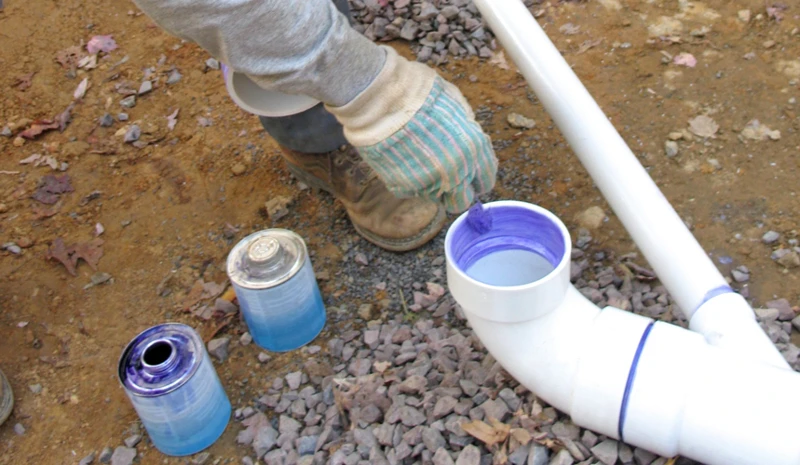When it comes to robust and reliable adhesives, epoxy glue stands out as a versatile and strong option for bonding a variety of materials. Composed of two parts, resin and hardener, when mixed, they create a chemical reaction that results in a durable bond that is resistant to heat, chemicals, and wear.
Epoxy Glue Uses
Epoxy adhesives are frequently used in numerous applications ranging from household DIY projects to heavy-duty industrial tasks. Their ability to adhere to a vast array of materials including metal, wood, glass, and some plastics, makes them an indispensable tool in many repair and construction scenarios.
How to Use Epoxy Glue
While epoxy offers formidable bonding capabilities, achieving the best results requires following certain steps and precautions. Understanding how to use epoxy glue is essential for ensuring its effectiveness, as well as personal safety.
Preparation and Safety Measures
Before embarking on your project, it’s crucial to prepare your workspace and materials. Ensure that surfaces to be bonded are clean, dry, and free of any debris or grease. Safety should be your top priority; wear gloves and work in a well-ventilated area to avoid inhaling fumes.
How to Apply Epoxy Adhesive
- Measure: Dispense equal amounts of resin and hardener.
- Mix: Combine the two components thoroughly for the time specified by the manufacturer.
- Apply: Use a tool to spread a thin layer of the mixture onto the surfaces.
- Bond: Join the items together and apply pressure. Consult the product instructions for the required curing time.
Loctite Epoxy Instant Mix Instructions
Loctite Epoxy Instant Mix provides a user-friendly solution with its self-mixing nozzle. To use, simply dispense the epoxy directly onto the surface and mix for a reliable bond.
Specific Applications of Epoxy Adhesive
Epoxy’s versatility allows it to be customized for different materials, each requiring a unique approach to maximize the adhesive’s effectiveness.
Using Epoxy Glue for Metal
For metal applications, ensure surfaces are free from rust and oils. Apply the mixed adhesive to the metal surface and press firmly. The resulting bond will be strong enough to withstand significant stress.
How to Use Epoxy Resin Glue for Wood
Wood surfaces should be sanded and dust-free. Epoxy resin glue is particularly useful for woodworking as it not only bonds but can also fill gaps. Spread evenly and clamp the wooden pieces together during the curing time.
Using Epoxy Glue for Plastic and Other Materials
Plastics can be tricky due to their different compositions. Always check the epoxy’s compatibility with the plastic type you are using. For other materials, ensure a clean surface and follow the general application guidelines.
Advanced Tips for Using Epoxy Glue
To take your bonding projects to the next level, consider factors like temperature, which can affect curing time, and the importance of precise mixing to ensure the strength of the bond. Experiment with different types of epoxy to find the best fit for your specific project.
Removing Epoxy Glue
Accidents happen, and sometimes we need to remove or clean up epoxy glue. While it’s a formidable adhesive, there are ways to address unwanted spills or bonding.
Removing Cured Epoxy from Surfaces
If you need to remove cured epoxy, heating it gently with a heat gun can soften the adhesive, allowing you to scrape it off. Chemical solvents can also be used, but always follow safety guidelines when handling these products.
How to Remove Epoxy from Skin
In case of skin contact, avoid using solvents. Instead, wash the area with warm soapy water and gently peel or roll the epoxy away from the skin. If irritation occurs, seek medical attention.
Epoxy glue is a versatile adhesive used for bonding various materials. Whether you’re working with plastic, metal, or any other surface, knowing how to properly use epoxy glue is crucial for a successful bond. For those looking to work with plastic, our guide on how to use epoxy glue on plastic will provide you with the steps and tips you need. If metal is your material of choice, make sure to read our instructions on how to use epoxy glue on metal to ensure a strong and durable hold. And before you start your project, it’s important to understand the basics of epoxy glue preparation, which you can find in our article about how to mix epoxy glue. With the right knowledge, you can tackle any project with confidence!
Troubleshooting Common Epoxy Glue Issues
Some issues you may encounter include improper mixing resulting in weak bonds, or not applying enough pressure during curing. To troubleshoot, review the manufacturer’s guidelines and ensure adherence to all recommended practices.
Using epoxy glue effectively requires knowledge, precision, and practice. By following these guidelines, you can harness the full potential of this powerful adhesive for your projects.



